Vitlug is not a completely popular garden culture, which has excellent taste. This plant is a close relative of the chicory and belongs to the Astrov family. The word "Vitlug" translated from the Dutch language means "white sheet". The plant is often referred to as a cycor salad or salad chicory. In this article, we will try to learn everything about the Vitlife and the cultivation of this garden culture on the household plot.
Vitlug - vegetable culture. Description
Chicory and Vitlug - close to each other plants. Vitlug received the greatest spread in Western Europe, namely in Belgium and Holland. Sometimes this vegetable culture is even called Belgian chicory. Vitlug, though known to humanity since ancient times, producing his winter distressing in order to obtain snow-white leaves only in the 18th century.
Consider some features of Vitlf:
- vitlug is sometimes called Brussels Chicory, Belgian chicory, salad chicarium. The culture occurred from the rooted chicory, from which various extracts and alcohols were manufactured in the 19th century for industrial purposes;
- vitlug - a perennial plant belonging to the family of comprehensible. Culture is grown as a two-year-older;
- vitlug in the first year of life forms a rosette of leaves on wide stiffs and a large white root. In the second year of life, a long stem appears, the height of which comes to 120-130 cm. Stem branch;
- korneflod Vitluga reaches 6-7 cm in diameter;
- vitlf's leaves socket in the first year of life has a dark green color and an inverse one, slightly elongated shape. These leaves can also be eaten, but only after soaking, in the process of which unwanted bitterness is derived;
- the minor flowers of Vitlf are painted in white or bluish tint and are collected in small baskets-inflorescences;
- vitlf fruit - a seed of 2-3 mm long with seeds inside. Vitlf seeds are suitable for further cultivation for 3-4 years;
- vitlug, like most other varieties of salad, is able to carry freezes to 2-3 degrees of frost;
- vitlug - a yield garden culture. If the rooting roots are placed closely, then with 1 sq. M. It is possible to collect up to 15 kg of delicious and useful crop.
Vitlf. Beneficial features
Vitlug every year is becoming increasingly popular among dacities. After all, this culture has an unusually valuable composition and excellent flavoring characteristics. Vitlug contains in itself:
- up to 10% dry matter;
- up to 2% of sugars;
- proteins;
- vitamin C;
- carotene;
- inulin;
- mineral salts of potassium, calcium, phosphorus, iron;
- intinib and others.
Those who tried Vitluff note the piquant mustard, which the plant contains the valuable component in it - inthibain. It is possible to regularly eat vitlf in the following cases:
- to normalize the operation of the gastrointestinal tract. Vitlug helps to digest and easier to absorb animal products;
- regular use in the food of Vitlf is capable of a positively affecting the work of the liver;
- vitlug is useful to those people who suffer from various violations of the cardiovascular system, suffer obesity, atherosclerosis;
- inulin, contained in large quantities in Vitlife, is split into fructose. It is for this reason that it is possible to eat this vegetable culture in food can people suffering from metabolic diseases, diabetes;
- drinking in the food of Vitlf is capable of positively affecting the work of the nervous system. It is observed an excellent soothing effect of Vitlf;
- useful to use Vitlug to people experiencing problems with kidneys, pancreas.
People suffering from hypertension can use vitlug for the preparation of delicious and useful coffee. For this, the roots are cut into circles, dried them, and then used to prepare the fragrant drink.
Vitlug - Photo
Vitlf. Sorta
There are many hybrid varieties of vitluga, which differ from each other in color, shape and size of kochanov. In addition to White Kochanov Vitlfa, you can meet spectacular varieties of a red or yellow shade. On the shelves of stores it is easy to meet hybrid varieties of Vitluga from the Netherlands, Belgium. Consider in more detail the varieties of domestic selection, which are especially popular in the regions of Russia.
Chicory Vitlug "Cone"
- Vitluga Cone variety is an ideal stretching variety. The surveillance is produced in warm and dark rooms from December to January.
- The "cone" variety is medium-gray in maturation. Vitlug is grown by sowing seeds into an open ground.
- Since the seedlings of Vitlife, the cone variety and the ripening of the rosette of the leaves is 98-113 days. Roots need to be removed before the onset of frosts.
- The process of distillation of Vitlife variety "cone" takes from 15 to 30 days. Take the vitlouf of this variety in approximately 1 month after harvesting root.
- The root system of Vitluga "Cone" is represented by a large root corner, which reaches 35 cm in diameter, and in length - 15-20 cm.
- Kochan Vitlfa "Cone" has a white color and a juicy white flesh. In the form of the Koch reminds Ellipse.
- To remove the harvest of Vitlouf "Cone" follows when Kochan reaches a height of 15 cm. The mass of ripened Kochana Vitlfa reaches 100 gr.
- When the vitlouf of this variety is distinguished, it is very important to observe the temperature and illumination. Culture prefers a dark place. The temperature may vary from 7 degrees of heat to 15-16 degrees of heat, but not higher. Also in the process of pastures do not need to forget about abundant irrigation.
- The "cone" variety is pretty yield. If you put on 1 sq. M. 250 roots, it will be possible to assemble about 25 kg of useful and tasty harvest.
Chicory Vitlug "Rocket"
- For Vitluga "Rocket" landing and care in the first year similar to the process of growing carrots.
- A variety of "rocket" is required about 130-155 days to achieve technical ripeness from the moment the first searches appear.
- Vitlug "Rocket" on landing is similar to the rest of the varieties of Salad Chicory.
- After the roots are removed, they should be stored in a dark place at a temperature of + 1-5 degrees.
- Vitluga "Rocket" reversal produce in winter as needed. This process takes about 30 days.
- In the process of reversing the salad of Vitluga "Rocket" is very important to comply with some conditions. Temperature should vary from 16 to 20 degrees of heat. Casting can be made both in the soil and hydroponic way. The premises must be dark, otherwise Vitluff will be impatient.
- The mature Kochan Vitlouf "Rocket" has an extended shape, reaches a height of 12 cm and diameter 5 cm. Kochan has a white flesh of a dense consistency and with a pleasant taste. The mass of one mature coach reaches 85-100 grams.
Salad chicory - Vitlug. Growing
Step number 1. Choose a place to land Vitlf
In order to collect a good harvest of the rootlodes of Vitlf for his further distortion, it is very important to pay attention not only to the planting process, but also the choice of space for this vegetable culture. Try to take into account the following recommendations:
- the ideal landing destination for Vitlf will be the plot on which cucumbers, legumes or cabbage were previously grew;
- it is better to avoid places where tomatoes, carrots, parsley, potatoes, or salad grew;
- a place for the landing of Vitlf must be quite lit and clean from weed grass. Especially it is especially necessary to avoid the neighborhood with the oily and dusty.
Step number 2. We choose the soil for planting Vitlf
- Vitlug prefers to grow on neutral or weakly acidic soils. Acid soil before planting a plant must be known.
- Vitlug has a long root, and therefore the soil must have a good humus layer.
- If there is insufficient potassium in the soil, the Vitlug will slightly shoot.
- Vitlug prefers to grow on light soils with good aeration.
- Vitlug is a garden culture, which is demanding of moisture in the soil, but also does not like stagnation of water. It is better to avoid the place for planting a vitlf with a high fitting of groundwater.
Step number 3. Preparing a place to land Vitlf
If you have chosen a place to land Vitlf, then you need to begin to prepare it when you removed the previous harvest.
- Start to prepare the area before planting Vitlf in the fall. To begin with, simply disappear, remove weeds, their roots. After 2 weeks, it is reappearing a plot again to remove sprouted weeds. Since the root of the Vitlf is long, then it is necessary to drain the plot to a depth of at least 30 cm.
- If the soil is too heavy and clay, then the autumn also contributes 1 bucket of peat per 1 sq.m.
- With preliminary autumn preparation, the site also contributes 1/4 of the bucket of manure or compost, 1 tbsp of superphosphate, 1 tbsp of potash salt. 1 st ash per 1 sq. M.
- In the spring, it is necessary to move again to the depth of the bayonet shovel. Under the people, 1 tsp ammonia nitrates bring. Do not make manure or compost into the soil immediately before boarding. Organic fertilizers will adversely affect the appearance of root, which will also accumulate nitrates.
Step number 4. Choose time to land Vitlf
When choosing a time to landing Vitlf, it is necessary to follow the purpose of this landing:
- if you are going to grow a Vitlug in order to further distortion of rootepodes, you need to start a landing in the third decade of May;
- if you are going to grow a vitlug for the purpose of consumption of a sheet of a sheet outlet, then planting a plant in the first decade of May.
If it is too early to sow seeds, then the Vitlug will shoot himself very much. Those copies that bloom are not suitable for pastures. When determining the timing of Vitlf landing, it is also worth navigating at the temperature. The soil should warm up to 7-10 degrees.
Step number 5. Landing Vitlfa
- Make a depth 1-2 cm deep in the ground.
- The minimum distance between the rows should be about 30 cm.
- Earth before planting seeds of Vitlf must be moistened.
- Place the seeds in the rows and pour them down with the soil.
- Gate the ground so that its contact with the seeds is stronger.
CARE FOR Salad Cicarium Vitlough and Cleaning Roots
After you have landed Vitlf in open ground, you need to care for young plants:
- the first shoots of the Vitlife appear in about 1 week. As soon as this moment has come, you need to blow up the soil and disperse the crops so that between the plants there is a distance of 7-8 cm;
- after the plants are growing even more, you need to make a second thinning. Now there should be a minimum distance in 16-17 cm. This is necessary for the plants freely formed rooted roots;
- ruffle is an important element of vitlofami care. It must be carried out after watering, after the rain. It is necessary to loosen not only the land around the plant, but also in the aisle. At the moment when the leaves at Vitlf begin to climb, the aisle must be exploded to a depth of about 15 cm;
- also, when sowing sowing, it is necessary to remove those plants in the first place, the leaves of which come into contact with the surface of the Earth;
- watering is also very important in the cultivation of Vitlf. It is especially worth paying attention to the humidity of the soil at the time of the formation of roots and in dry weather. Optimal soil moisture for this garden culture - 50-60%;
- vitlug responds positively to making feeding. At the beginning of August, it is possible to make 1.5 tbsp of nitroposki, which is diluted in 1 bucket of water. The resulting solution should be enough for 3 square meters of Vitlfa;
- the removal of weed grass is a mandatory element of care for any garden culture. including Vitlug. The roots of weeds can interfere with the formation of full root root.
Harvesting and storage conditions of Vitlfa root
In order for the surveillance of Vitlfa successfully, it is very important not only to maintain the root root, but also to assemble them:
- switching the rootlough roots in dry weather. It is also necessary to make it before the onset of the first autumn frosts;
- roots digged as much as possible with garden forks. Experienced gardeners do not advise this shovel, as fruits can be easily damaged;
- when harvesting, it is necessary to simultaneously carry out the sorting of roots. Damaged and missing instances are immediately postponed, they are not suitable for storage and pastures. Too large root roots are also unsuitable for pastures;
- when collecting harvest, Vitlf is not cut. Plants are stored along with the outlet of the leaves over the week. During this time, the leaves transmit all the useful elements of rootes;
- a week later, you can cut the tops. It is also necessary to do it very carefully so as not to damage the upper part of the root. It is better to do a slice at a distance of 2 cm from the head of the Vitlf;
- it is also possible to sort into small root roots, medium and large;
- pick the containers for storing the roots in which they will expect distillation;
- korneflodes of Vitluga lay out in the boxes horizontally and spend sawdust, sand. In the place of storage should be cool, dark, wet. There must also be good ventilation.
Vitlfa
Vitlf roofs are sent to the distance not immediately after cleaning with the bed. It must pass about 20 days. Then you can make a vitlf distillation throughout the winter in small portions as needed. In this process, some important rules must be observed:
- vitlfa will be distilled in a dark place. If darkness is not enough, then Vitlf's kochangs will have a bitter taste. And only in the pitch darkness will appear a pleasant sweet taste;
- select the containers in which the vitluga is distilled. Their sizes depend on how many rootpods you want to put in them. You can use boxes, containers, pots. If the surveillance is made at home, you can even use the usual bucket;
- vitluga roots are planted in prepared containers with a light earth substrate. It is quite suitable for a combination of garden land and peat in a 1: 1 ratio;
- some gardeners prefer to grown vitluga namans not in the ground, but in special containers on hydroponics, where there is a constant circulation of water;
- vitlf's roots before landing should be examined again and sort if you did not do this at the time of harvest. Roots must be approximately the same size, their growth points should preferably be coincided. It is also necessary to carefully examine the vitluga for the presence of reversed roots;
- it is not necessary to plunge the top of the root of the root when landing. So that she does not start, it should rise above the ground for 1-2 cm;
- After planting, the roots of the Vitlf should be poured and hiding once again the layer of soil;
- compliance with the temperature mode and the illumination mode when the vitluga is distinction has a tremendous value. This will directly affect only the external species of future kochanchors, but also on their taste characteristics. After watering, the containers with rooteplodes are covered with a light-tight material. The ideal temperature for vitlfa is 10-12 degrees of heat. If you make a distance at a higher temperature, then the kochannels are matured for a shorter time (16-18 days), but their taste quality will suffer. It is at 10-15 degrees that Vitluff acquires a specific and unique taste that gardeners are achieved;
- the room where the vitlf will take place should be well ventilated. Roots are periodically watered, but they do it carefully to prevent overgrowth. Some gardeners also produce 2 ammonium uniforms in the calculation of 10-20 gr on 10 liters of water;
- at the expiration of pastures, the maturity of kochanchikov is determined visually. You just need to dig a few pieces and see. If Vitlug is ripe, then the kochannels are cut. It is necessary to cut them so that the leaves do not crumble;
- vitlf's Koircians can be used immediately in food, and you can send to the refrigerator, where they will retain their taste characteristics over 3 weeks. For this, the kochangs are sorted and sent to the packages, put on the lower shelf in the refrigerator.
Some lovers of Vitlf Kochanchors are managed to produce a surveillance even in glass jars. Banks fill with water and placed there 2-3 roots. After that, the bank is covered with a dark cap and put in a basement, a storage or another place with the desired temperature conditions. You can also be distrained in the greenhouse.
The hostess will find a lot of cooking methods of Vitlf. The vegetable is used to prepare the salads, it is boiled, baked, stew, fry. Someone may seem that the process of obtaining elevated Vitlf Kochanchors is too long and difficult. Believe me, it is worth it. Vitluff will become a valuable source of vitamins and useful trace elements throughout the winter.

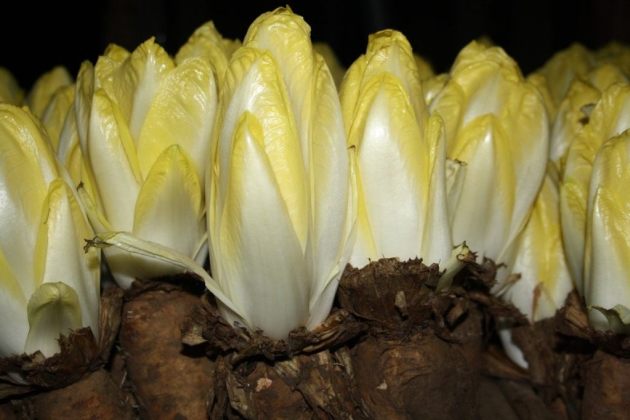
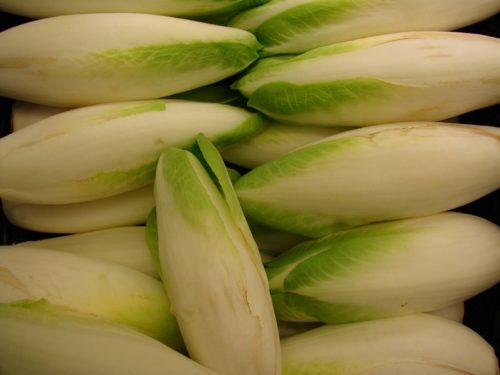
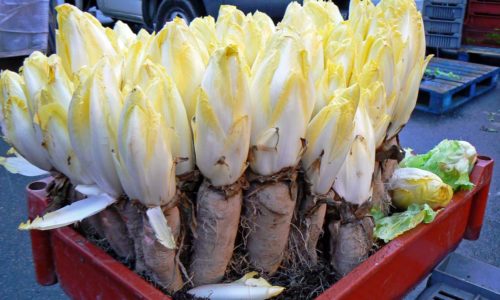
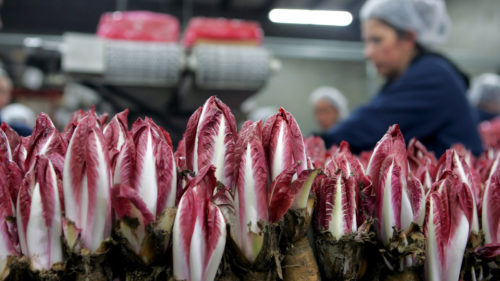
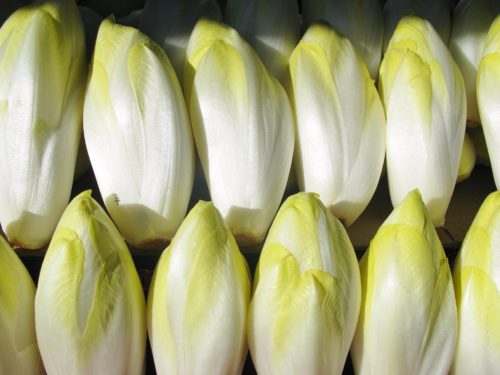

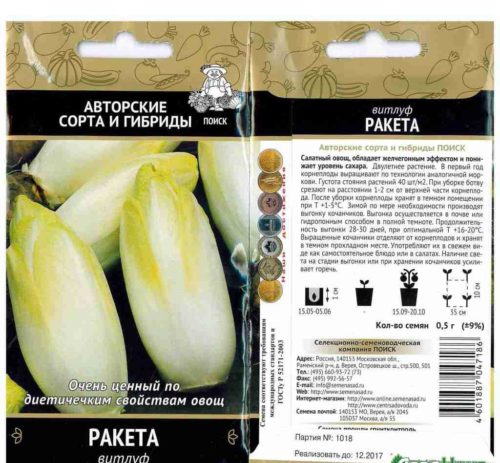
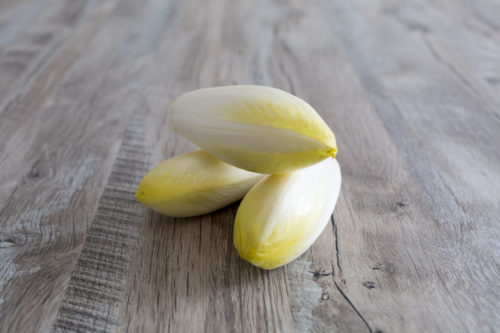
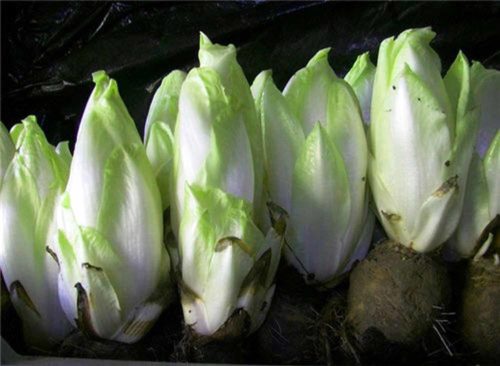
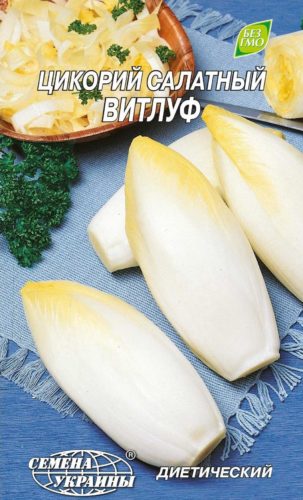












 Start a discussion ...
Start a discussion ...